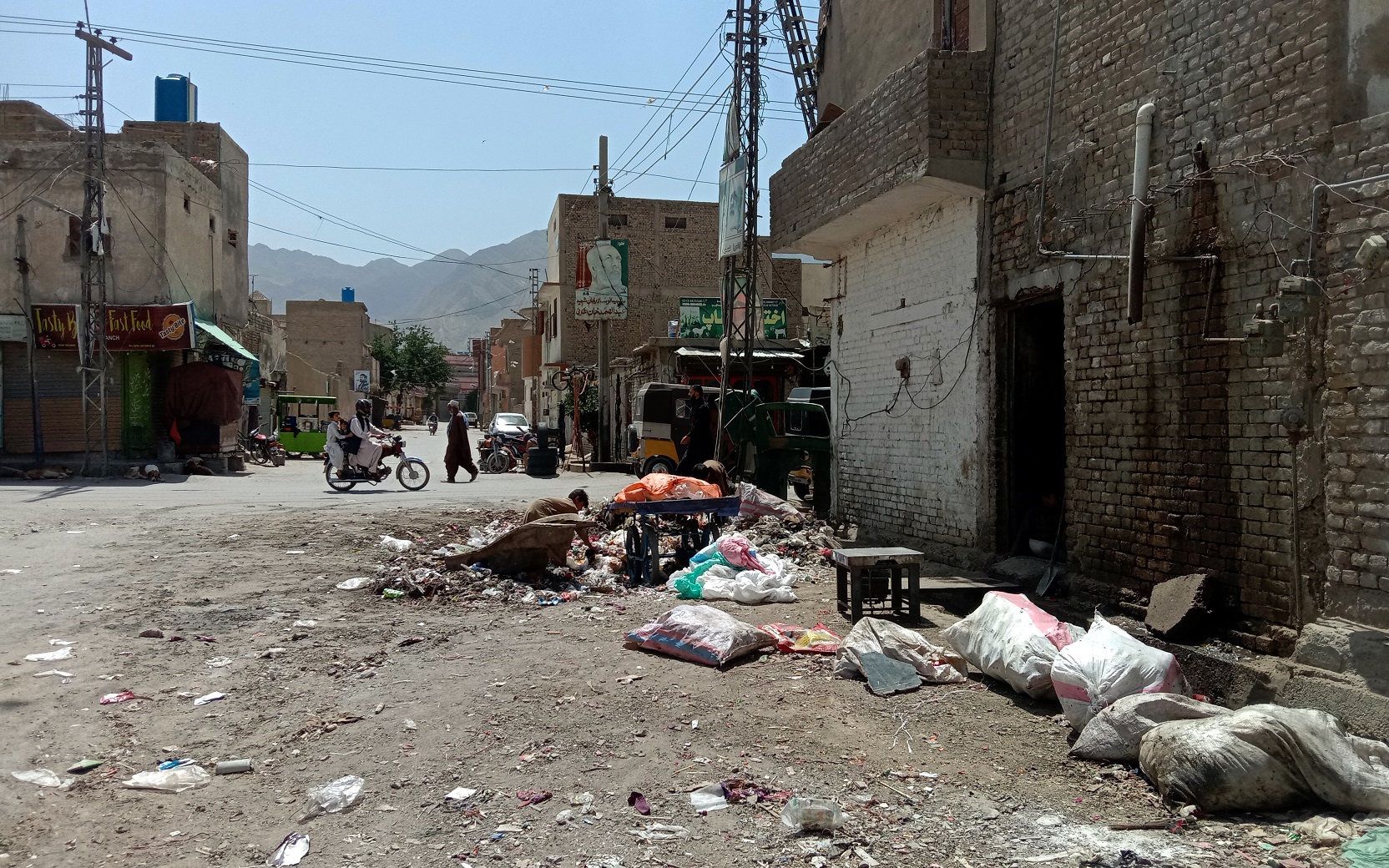In Multan, an estimated 1,100 tons of waste accumulates daily, finding its way to a vast pit behind the city’s fertiliser factory. The Multan Waste Management Company, tasked with waste collection, collects approximately 700 tons of garbage daily, while the remainder is left strewn across streets, alleyways, and roadsides. At the outset, the waste is gathered and deposited in five distinct refuse collection sites scattered throughout the city. The Shaheen Market area serves as a collection point for waste from the streets in its vicinity. The second depot is positioned opposite the Government School Agapur, adjacent to the Agapur Filtration Plant. The third depot can be found alongside the Bibi Pak Mai Cemetery wall.
The fourth depot is situated in the Shah Rukn Alam Colony within the ‘K’ block, while the fifth refuse collection site is located on Sabzi Mandi Road.
In the vicinity of the refuse collection site at Shaheen Market, a local businessman named Amjad, who operates a bicycle business, points out that the company’s machinery gathers waste until 11 in the morning. Subsequently, the waste is transported out of the city over the day. This process results in the dispersion of garbage into nearby shops, leading to discomfort due to the unpleasant odour.
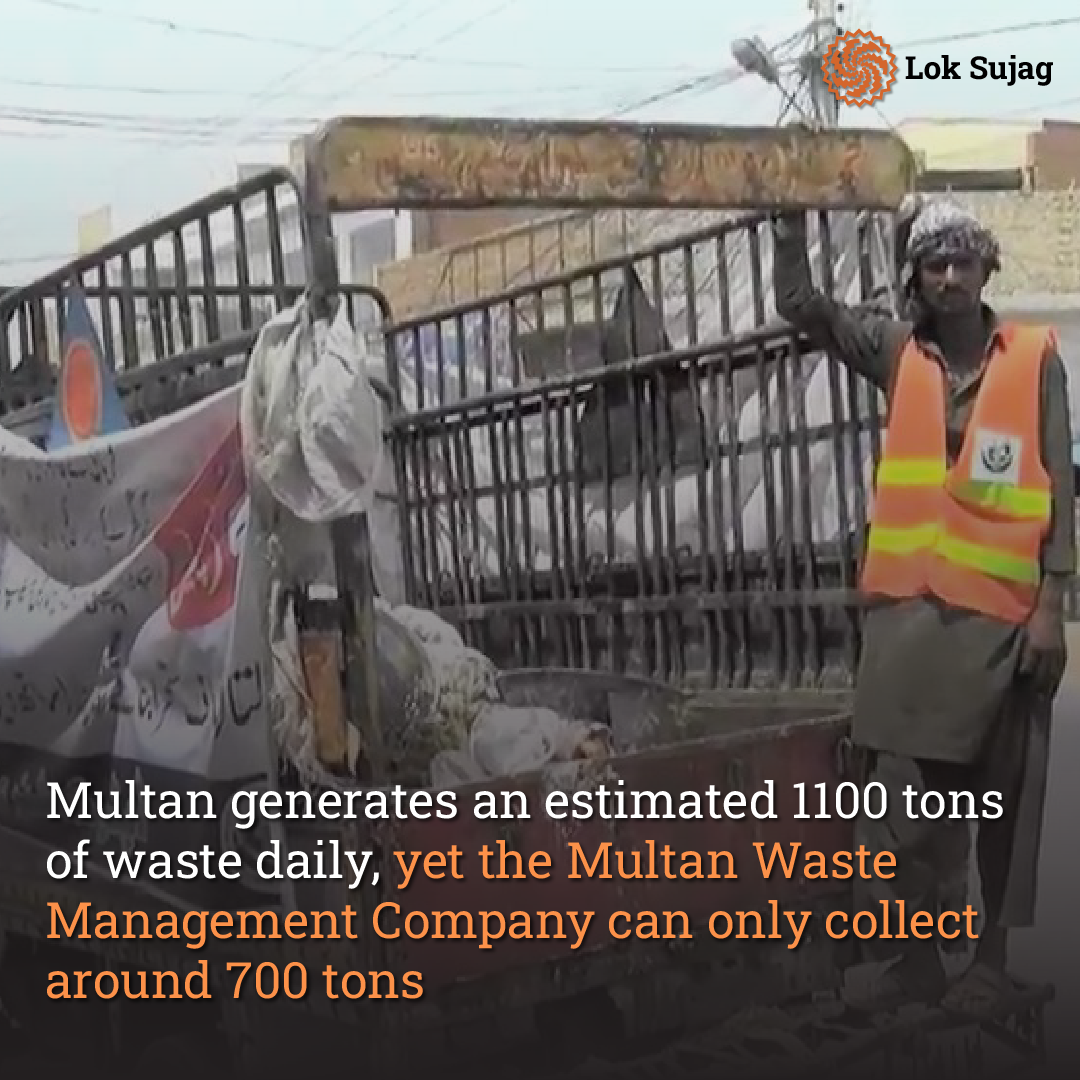
Nadeem, who comes to the Aghapur filtration plant to collect water, says having a waste depot in front of the filtration plant is highly inappropriate. “Its presence has significantly contributed to pollution in the area when a substantial population frequents the plant to access clean water.”
Afzal, a local resident who brings his children to the school near the waste depot, expresses his concerns about the detrimental impact of the depot’s proximity. He says that schoolchildren are exposed to polluted air, raising concerns about their health and well-being.
Similar complaints are voiced by residents regarding the filth depots near Pak Mai Graveyard and Shah Rukn Alam Colony.
The Waste Management Company collects waste from the city’s 68 union councils but faces challenges due to insufficient staff, inadequate machinery, and a lack of appropriate disposal sites.
In 2010, the City District Government acquired a 12-acre site at Habibah Sial’s place, investing approximately 60 million rupees to establish a landfill site to dispose of waste collected throughout the city.
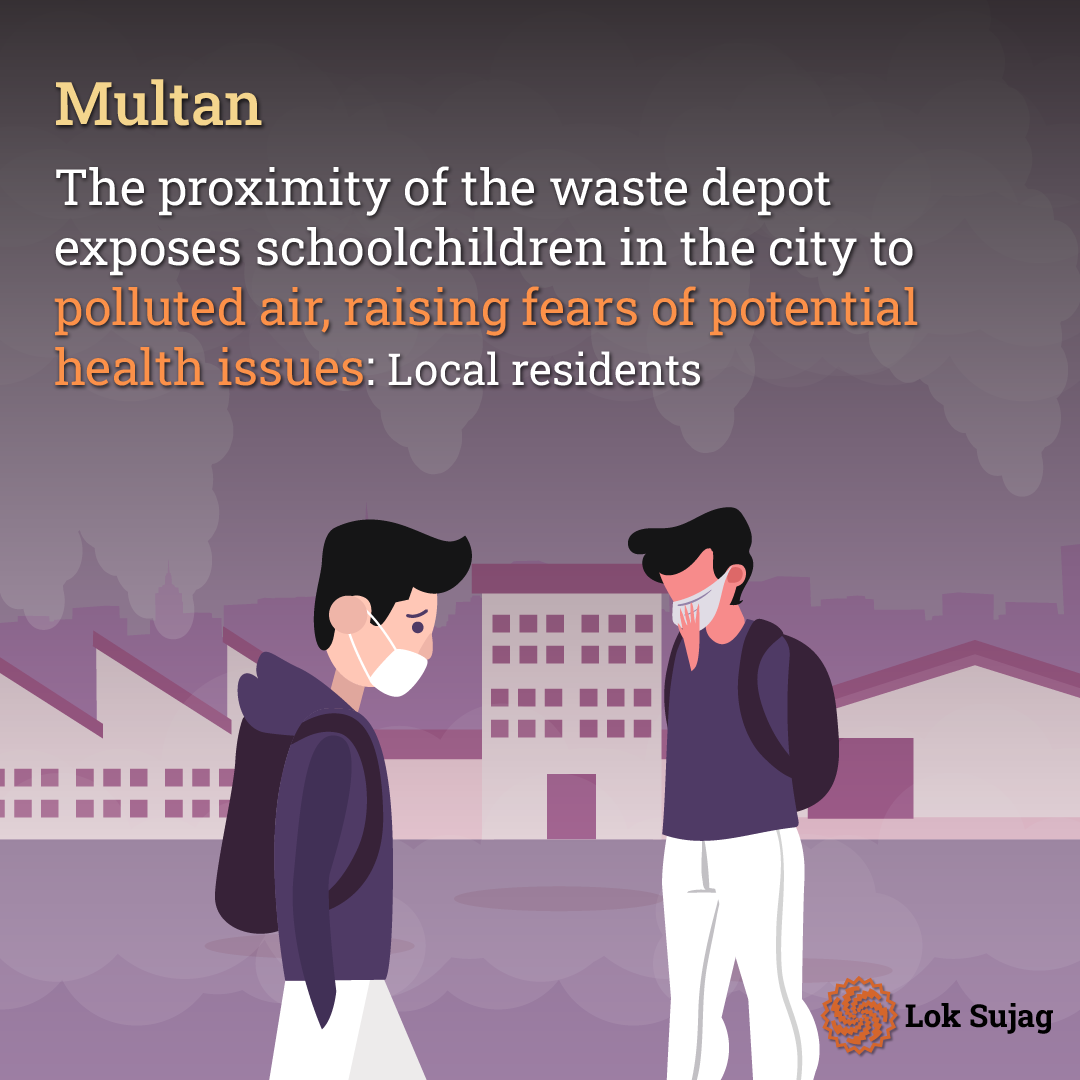
However, in recent years, the company has suspended the transfer of additional waste to this site as it has nearly reached full capacity.
Fahim Lodhi, the Senior Manager of Multan Waste Management Company, says that Habibah Sial’s landfill is reserved solely for the disposal of sacrificial animal remains during Eid-ul-Adha.
“Efforts are underway to identify a new landfill site with the support of the Asian Development Bank. A 250-acre plot of land located approximately four kilometres from Habibah Sial has been earmarked for this purpose. However, securing the necessary funding presents a significant challenge.”
The company was established in 2013 with the support of the district government, which employed 2,200 individuals. Sanitation machinery and a landfill site were also made available.
Nevertheless, despite a decade passing and a growing population, there have been no subsequent hirings, machinery acquisitions, or new landfill site procurements. Approximately 600 originally employed individuals have retired, and around 650 are now over 50.
Furthermore, 200 employees occupy positions of responsibility in various offices and locations.
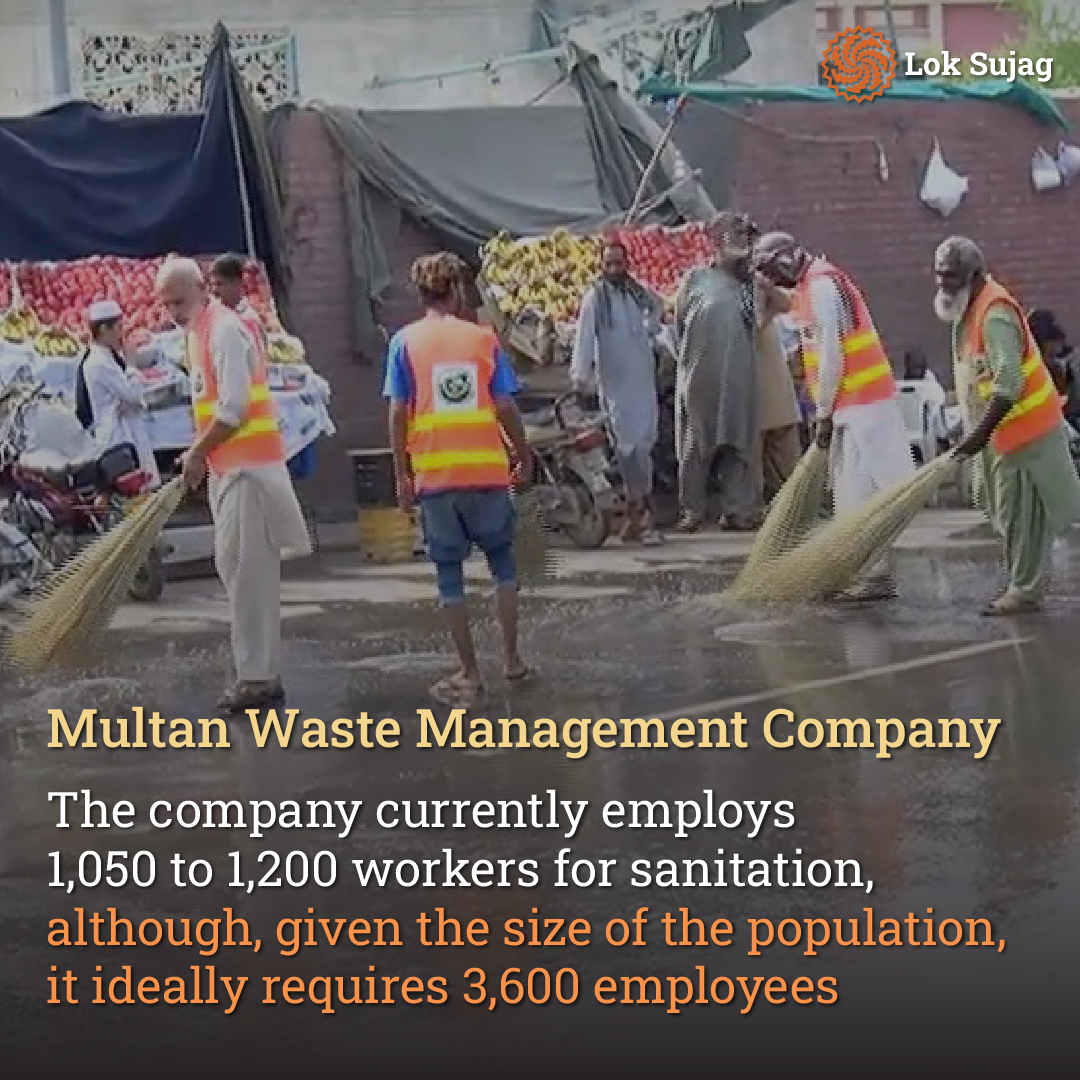
The company was established in 2013 with the support of the district government, which hired 2,200 employees. Machinery for sanitation and the landfill site were also provided. However, despite ten years passing and the population increasing, no further hiring was done, no additional machinery was purchased, and no new landfill site was acquired. Of the hired employees, around 600 have retired, while approximately 650 are over 50 years old.
Moreover, 200 employees hold positions of responsibility in offices and other locations.
Company officials say they currently employ around 1,050 to 1,200 sanitation workers. However, the company would require 3,600 employees to meet the population’s needs.
Also Read
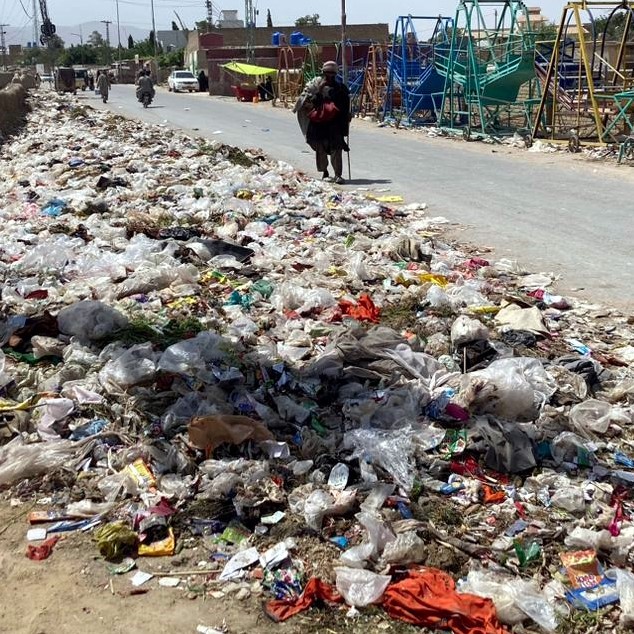
Quetta’s garbage woes: Calls for engineered landfill sites to tackle waste and pollution
The employees of this company, which has an annual budget exceeding 80 crores, voice concerns over the inadequate healthcare facilities provided. Workers such as 52-year-old Bashir, involved in waste transportation to the landfill, reveal they lack proper healthcare support. Bashir, who is suffering from Hepatitis C, is still required to operate a flat-tyre cart for waste transport.
Shahid Yaqub, Chief Executive of the Multan Waste Management Company, explains that the sanitation staff begins work at 4 AM and operates until noon to maintain the city’s cleanliness. Despite the company’s longstanding history, it continues to use outdated machinery, as new equipment has not been acquired since its inception.
Nonetheless, Yaqub reports that they are actively identifying a new landfill site.
Yaqub mentions that the process of acquiring new machinery was initiated four years ago. However, the procurement and finance teams have encountered challenges in finalising the purchase thus far.
Commissioner of Multan Division, Aamir Khattak, mentions that the Multan Waste Management Company is acquiring machinery valued at 40 crore rupees. He anticipates that this acquisition will lead to improvements in the existing issues.
Published on 24 Oct 2023
